The Okavango Delta Botswana: An Elephant Encounter
If you missed it, check out part one and part two (of our honeymoon recap)!
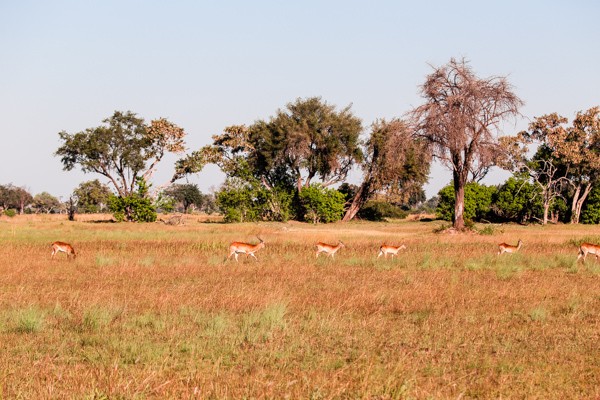
We woke up on our second full day at our camp in the Okavango Delta Botswana ready for our all-day game drive. Our guide, Aubrey, had offered it to us as a way to see even more animals, as it would allow us to drive much farther away from camp and head into a slightly different area of the delta.
We had breakfast (they also packed us lunch for the road!) before heading out. Once again, the drive started off as well as the days prior. Aubrey had noticed a few lion prints and we had barely driven more than 15 minutes before we came across an open plain and spotted four, adorable lion cubs hidden in the grasses. They looked at us cautiously, as they had clearly been left alone while their mothers went hunting.
Aubrey told us that the mothers and rest of the lion pack couldn’t be far off…
Sure enough, Aubrey tracked them and about 20 minutes later, we found all of them (2 mothers, 3 younger adults) resting under a tree. So much for hunting, right?
This marked our 14th different lion sighting in less than two days. We couldn’t believe it, and the experience is just as special with each one.
They do a pretty good job of appearing cute and cuddly, huh? We joked that they had simply wanted a little bit of a break and siesta from the babies.
We stuck around for a little bit before heading back on the road.
As difficult as it is to have any awareness of distances while you’re driving on these roads (honestly, there were several times that Connor and I were in the exact same area as a previous day and we didn’t recognize it at all), as a guess, we probably drove at least an hour or longer–maybe 6 or 7 miles–away from our camp that day.
Aubrey had mentioned that he had been driving in this other area of the Okavango Delta a few days prior and had spotted lots of giraffe (another animal on my bucket list!). It didn’t take us long for us to spot our first one!
Looking back, giraffes are definitely one of my favorite animals that we saw during the entire trip. Although we never spotted any giraffes drinking from the water, we did see a few giraffes running–in what appears to be slow motion due to their awkward and lanky legs–later that day!
The area that we were traveling in that day was much drier and had more vegetation. Whether it provided more food or area for shelter/hiding, we saw several larger groups of elephant as well. On our earlier days, we had only seen single bull (male) elephants by themselves.
We also spotted our first larger herds of zebra! Similar to the baboons, the zebra were probably one of the most skittish of all the animals we saw. They would stare at us, and the minute you got too close, they would get flustered, run away, and proceed to stare at you again from further away.
We spotted several young zebras, including this clearly (very, very!) pregnant mother with her weaning calf.
At one particular watering hole, we saw not only zebra and warthog (which kneel on their front two legs to eat from the ground–a very funny sight to see!), but giraffes as well as wildebeest. Aubrey told us that many times, certain animals will travel together–an example of a symbiotic relationship– as they all have different strengths and weaknesses.
Certain animals have great eyesight, others have great hearing, etc. and they all have better chances of survival as a result. Baboons, for example, actually make alarm calls (which we heard a few times during the trip) to warn others when cats, specifically leopards and lions, are around.
As you can tell, we had already seen so much already (it was probably 11:00 AM at this point) and not soon after this, we even got to see our first–and only–male and female ostrich! Honestly, I had never even expected to see one ostrich during the whole trip, so it was a very unexpected surprise!
The male ostrich was clearly trying to distract us from the female and immediately started walking away in the other direction.
As we soon realized, the female ostrich was clearly protecting its nest (which we could not find), as it allowed us to get much closer than our guide had ever experienced. Usually, as he explained, ostriches will run away or leave an area if you approach them at a close distance, and this one was sticking its ground.
Once we saw the ostriches, we stopped for lunch. A neighboring sister camp had actually visited the area (which had quite a large watering hole about 15 feet away) not soon before to set up a picnic table and chairs!
It was such a surreal experience. Not far away, we could spot impala, zebra, and about a hundred or so feet away, we could even see several (extremely large!!!) crocodiles lounging in the sun. And there we were, eating pasta salad and grilled chicken like it was no big deal. Um, is this real life?
Once we had eaten and were leaving, we spotted these black herons, which were using their wings to cover themselves, like an umbrella, and create shade to catch fish in the water.
It was so amusing to watch!
At this point, it was around 1:30 in the afternoon and we were getting ready to head back to camp, as it was going to be roughly a two hour drive from this distance. As we were driving back, we came across a small herd of elephants. A few of them were standing in a mud hole about thirty feet away, and in the thick brush, we could spot a tiny baby.
We had seen a few younger elephants earlier that day, but it was our first baby elephant of the trip! The mother was sizing us up from a distance and determining whether or not she wanted to venture closer to the mud hole.
Our guide, Aubrey, decided to back away and move to the other side of the brush, as he thought we might have a better vantage point from there. At this point, we were off of the road and surrounded, quite closely, by small shrubs and trees and on very sandy ground. About 30 or 35 feet away, we could see a few other elephants from the same herd.
We drove a few feet more and stopped. One large elephant (likely the female matriarch of the herd) looked in our direction, made eye contact, and immediately, without warning, started to charge us at full speed. There was a split second where I thought we would be able to get away (our guide immediately attempted to back our jeep up and drive away) or that the revving of the engine (and exhaust fumes) would scare it away.
However, within just a split second of that I knew, in my gut, that the elephant was going to hit us at full speed. If I’m being completely honest, I thought that we were going to die. Our jeep had no sides and the elephant had large tusks (one of which was broken, but large tusks nonetheless). Our vehicle was perpendicular to the elephant and it was about to t-bone us. What happened next is a blur. The entire event was a matter of seconds.
{Connor took a short video with a GoPro following the charge, and after returning home, we discovered that one of our memory cards had actually recorded the audio of the entire elephant charge.}
There was a huge crunch and the safari jeep had flipped onto its side–to give you some context, our guide and Connor were sitting on the right side of the vehicle–the side of impact– and I was sitting on the far left side. Luckily, our vehicle had a roll bar, which probably prevented us from flipping even more.
Miraculously, Connor and I managed to slowly stand up as the elephant was charging and somehow land on our two feet once the vehicle had flipped onto its side. Truthfully, I have no idea how we managed to do that, but somehow we were OK. Even more remarkable, my camera–which at that point was loose and around my neck–was also totally fine. In fact, we didn’t have a single scratch on our body. Thankfully, our guide, Aubrey, was also completely unharmed–even though the elephant’s head had actually rammed into his passenger door. Our guide immediately asked Connor to look over the side of the vehicle and make sure that all of the elephants were gone (sometimes they are known to stick around or charge several times).
The elephants were nowhere to be seen.
Again, miraculously, all three of us were OK, but Cindy (the guest that we had been traveling with us on all of our game drives at this point) was not. Once we had flipped, she immediately said, “My arm is crushed.” Later we learned that she had actually broken her scapula, radius, and cracked six ribs. She was still in her passenger seat, clearly in a lot of pain, and could barely move. At this point, our guide, Aubrey, attempted to use the radio to contact our camp, but as we quickly discovered, our radio was not working.
In hindsight, I can’t decide what was more terrifying. The fact that we had just been charged by an elephant and our vehicle had flipped over, or that we were miles from camp, in the middle of nowhere, and our radio was not working. It was about 2:30 in the afternoon and the only thing on my mind at this point was, “the sun is about to set in three hours and we have no radio signal.”
Thankfully, all three of us were able to carry Cindy away from the vehicle. Luckily, Connor has medical training (and she also happened to be a nurse) and both he and our guide stayed calm throughout all of this (otherwise, I probably would have been a complete mess). Our first priority was to attempt to flip the jeep back onto its side, a feat in and of itself, as we only had a high-lift jack and a cargo strap, and these vehicles are huge and extremely heavy.
It took us more than 45 minutes and many, many attempts to flip the vehicle back onto its side, but somehow we were able to do it. The scary part is that we were only able to do it because all three of us were uninjured. Otherwise, I have no idea what we would have done. At this point, our radio started working (however, we didn’t want to start the vehicle as the radiator was leaking fluids) and our guide was able to contact someone, who was in the middle of a supply run and was only a 15 minute drive away.
At this point, we knew that Cindy would need medical attention, and most likely surgery on her arm, and we needed to get back to the camp as soon as possible. It took us almost two hours to get back to the camp and we were met along the way by several camp staff members and the manager. Cindy was in a huge amount of pain (not helped by the fact that she had to endure every single bump along the road), and we had to stop several times–once for Connor to create a very rudimentary splint with sticks. Along the way, we saw several elephants–a few of which were very close to our vehicle–and I finally lost it and broke into tears.
Once we arrived back at camp, a medivac helicopter arrived to take Cindy to Maun, Botswana (for basic medical care) before taking her on a private jet that same night to Johannesburg, South Africa to get surgery. Meanwhile, we went back to our tent to regroup and there, maybe 20 feet away at most, was a large bull elephant just outside our tent. The irony was not lost on us (honestly, at this point, I had no desire to see any elephants whatsoever) and for the first time I was thankful for the electric fencing surrounding the tent.
Our camp offered to arrange for our transportation home the following day (and warned us that our next camp was in an area with a larger population of elephants), but we decided to stay, skip the morning game drive, and continue to our next camp as planned…

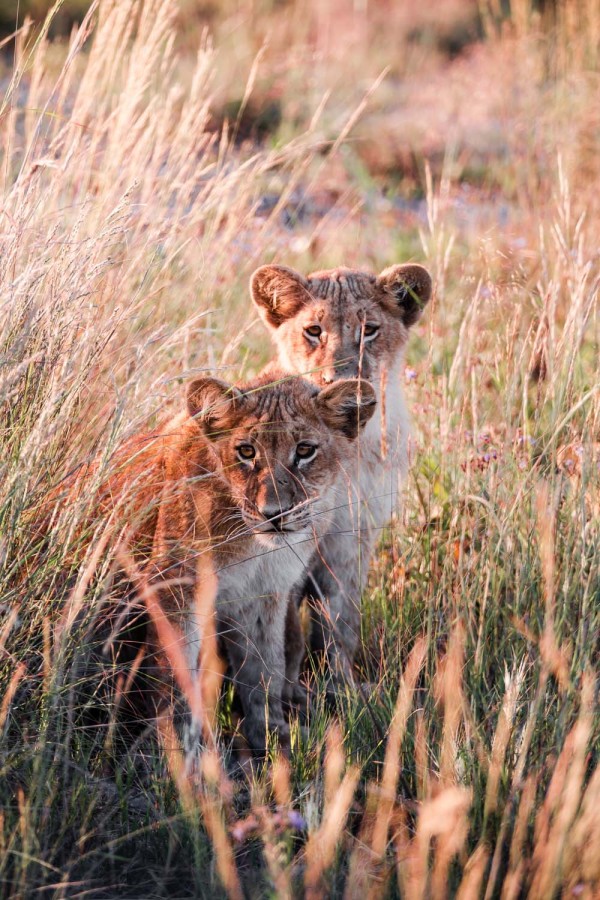
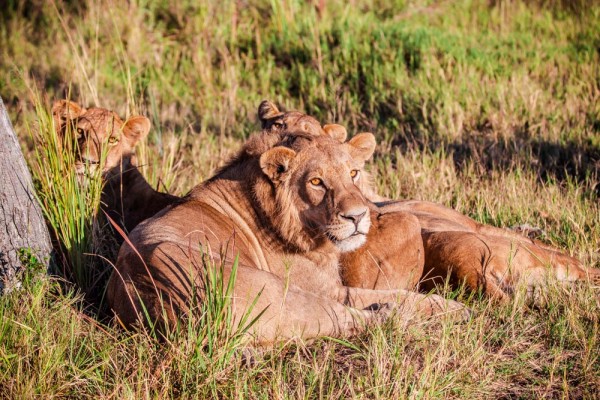
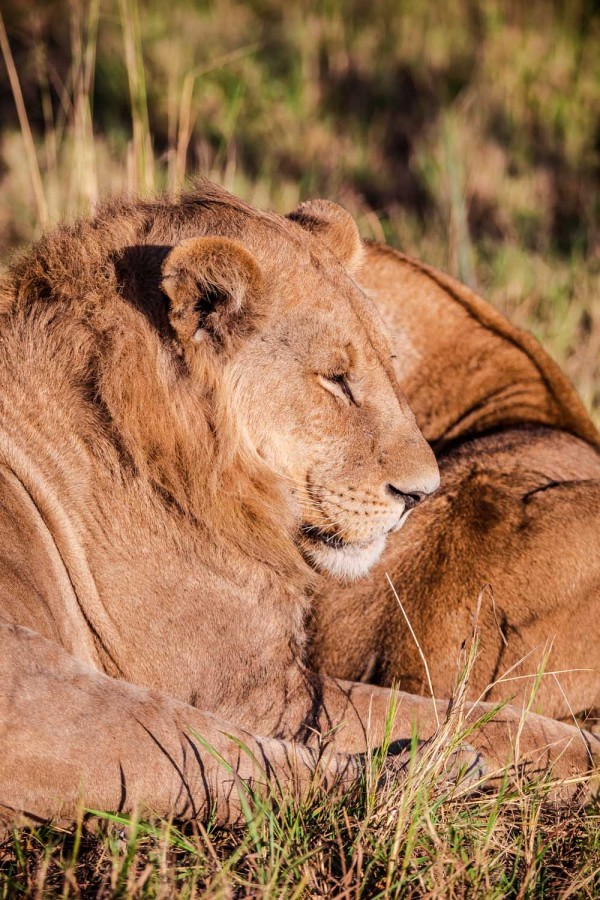
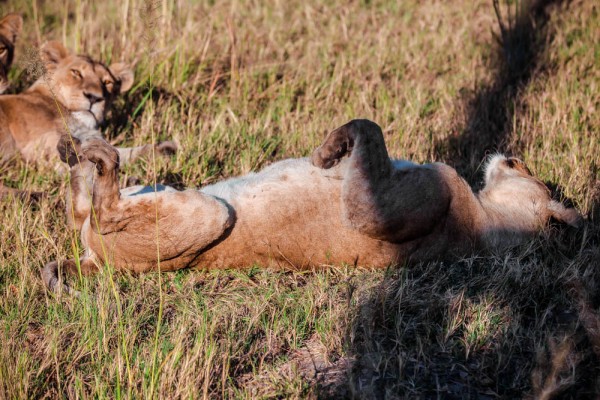
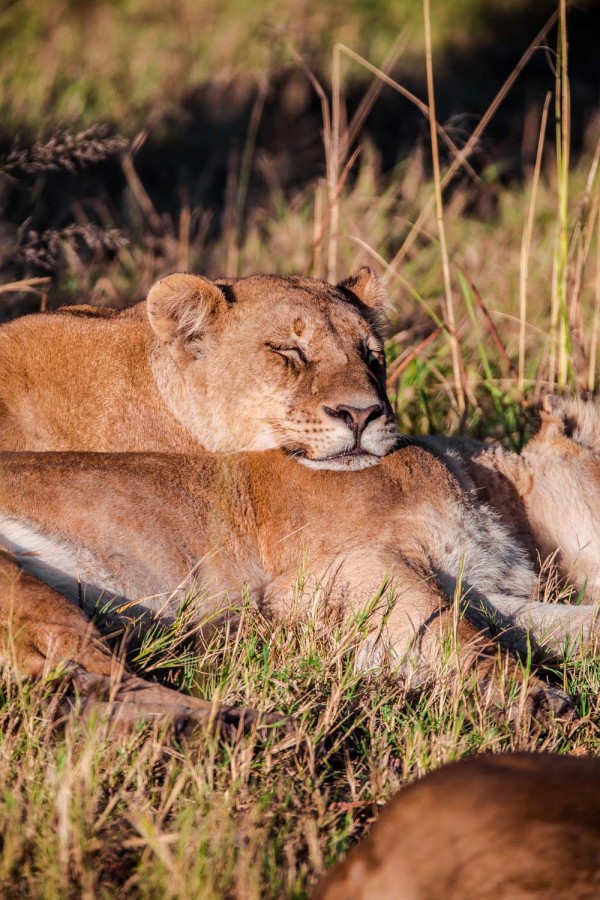
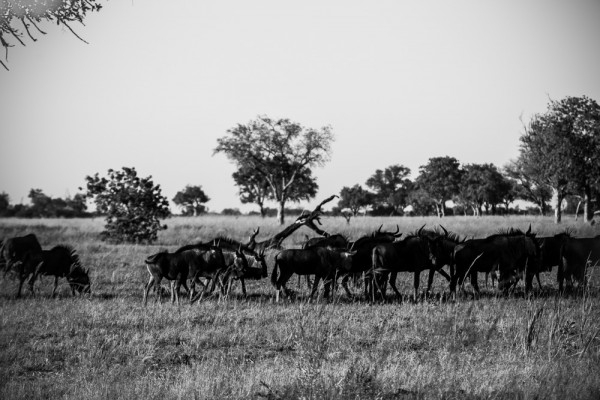
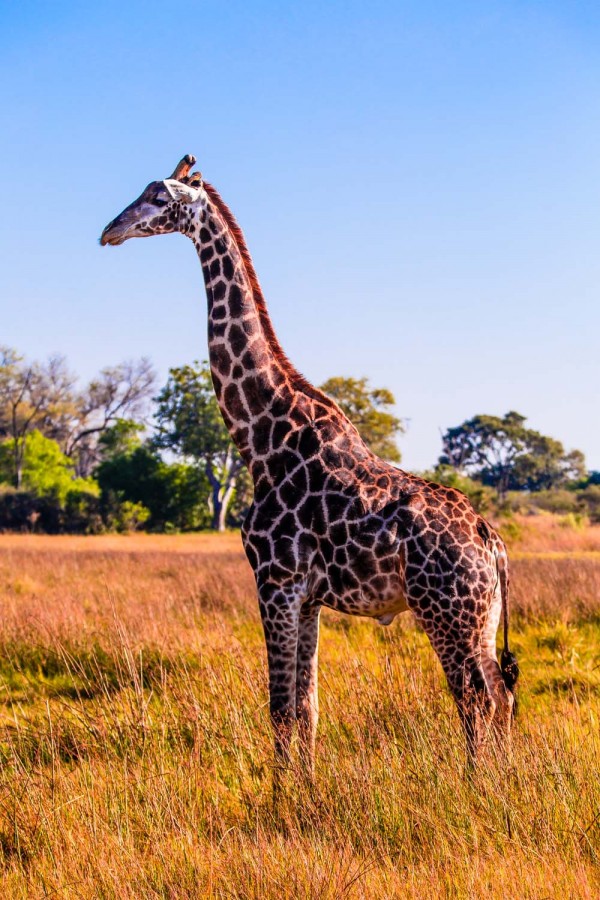
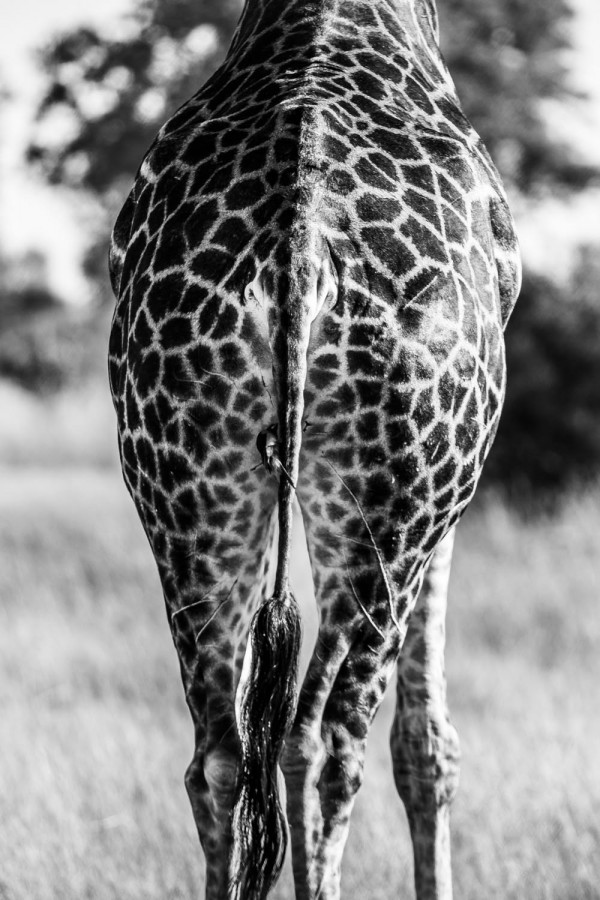
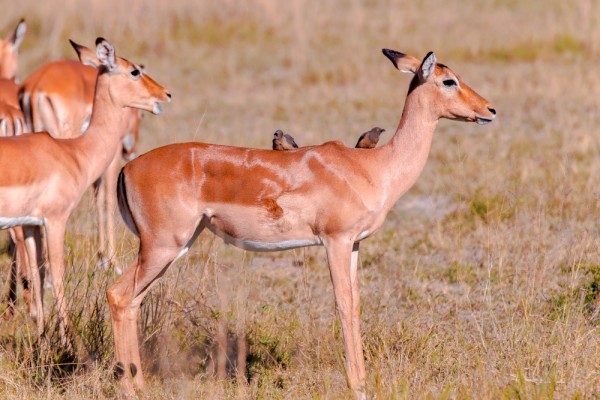
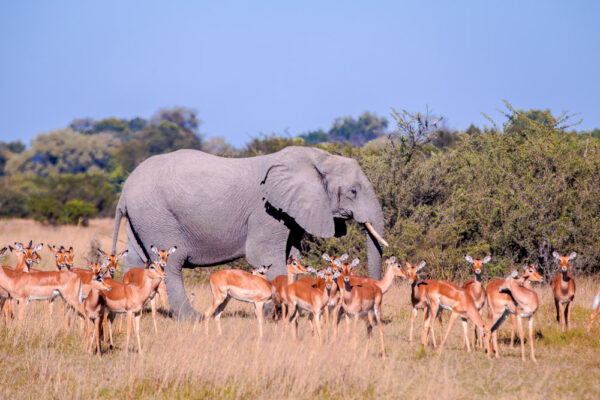
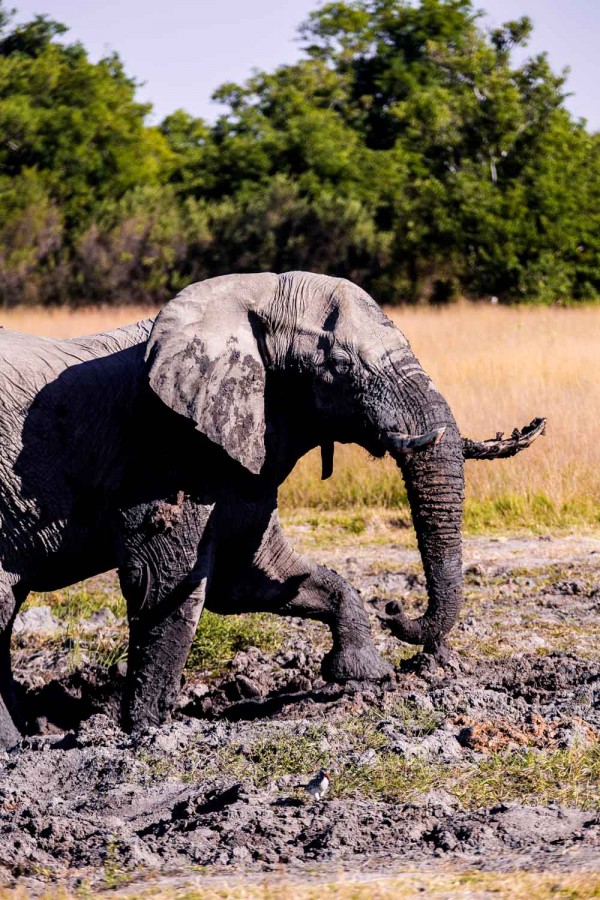
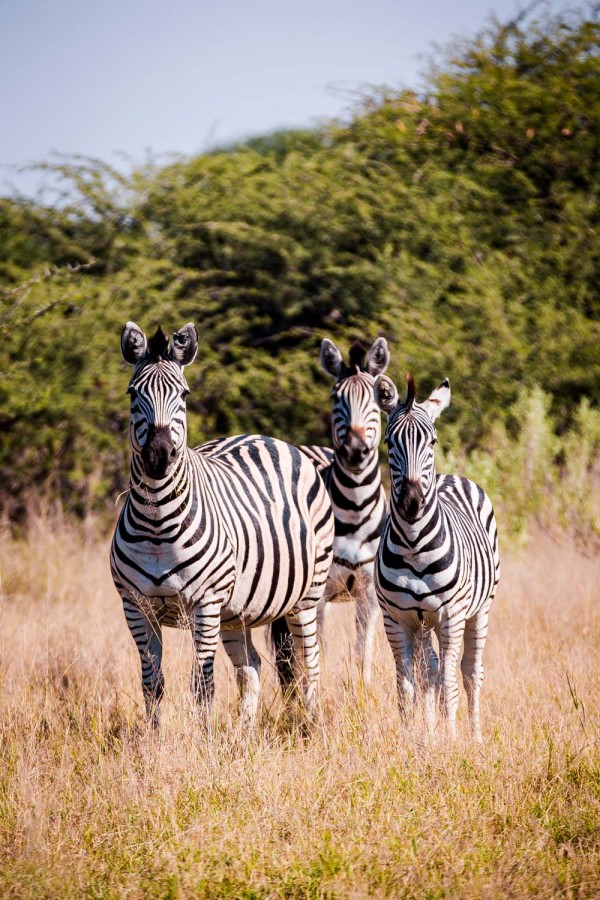
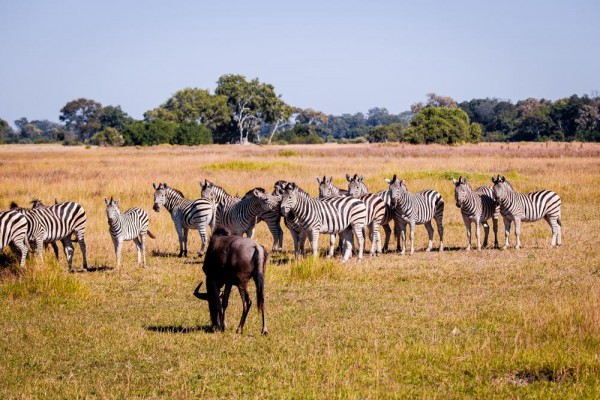
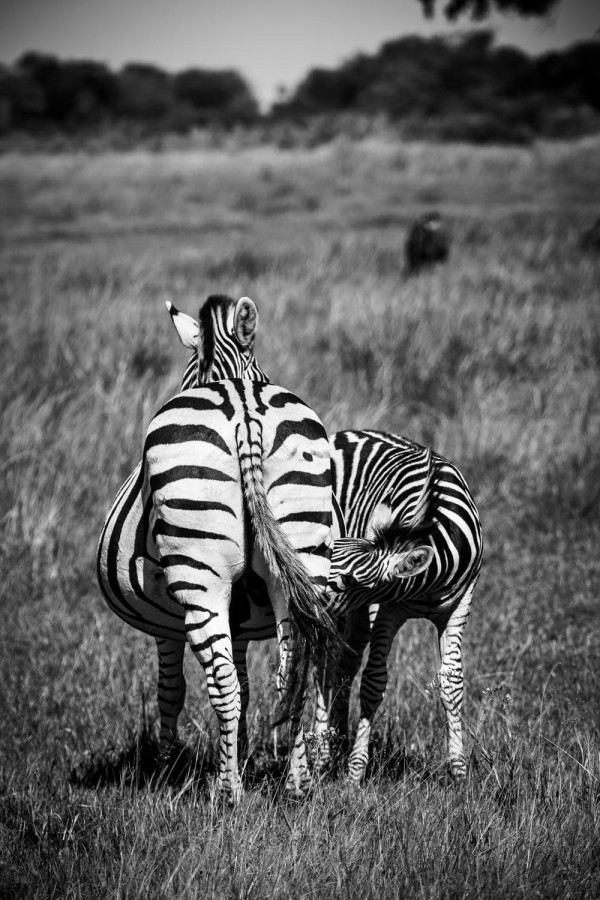
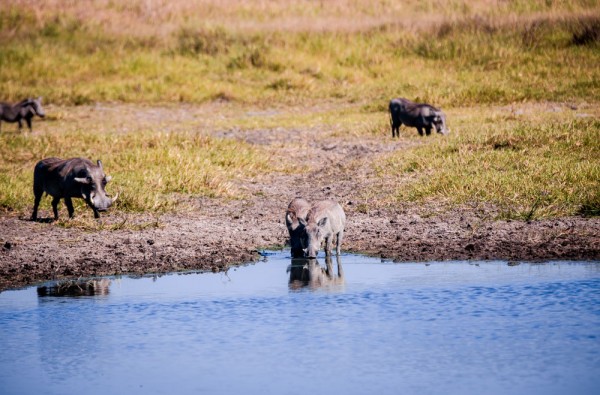
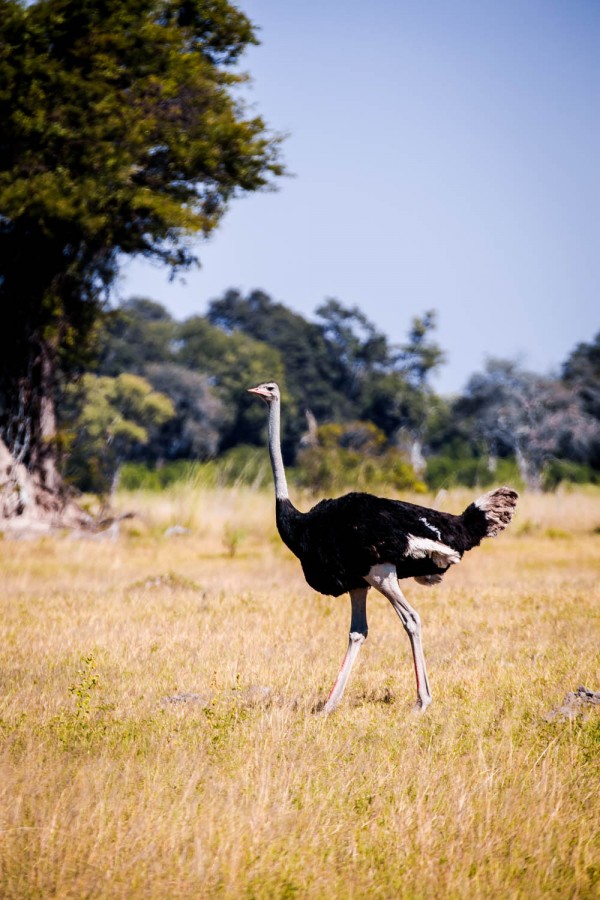
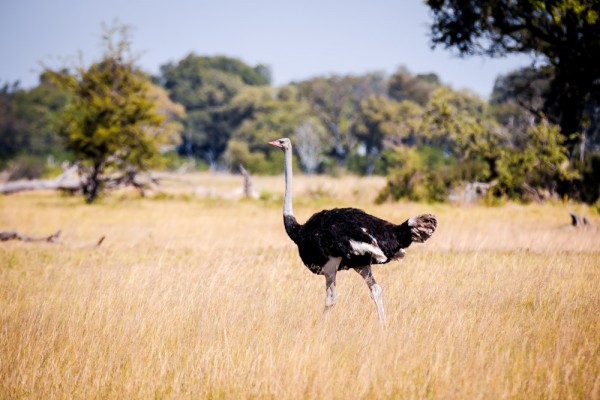
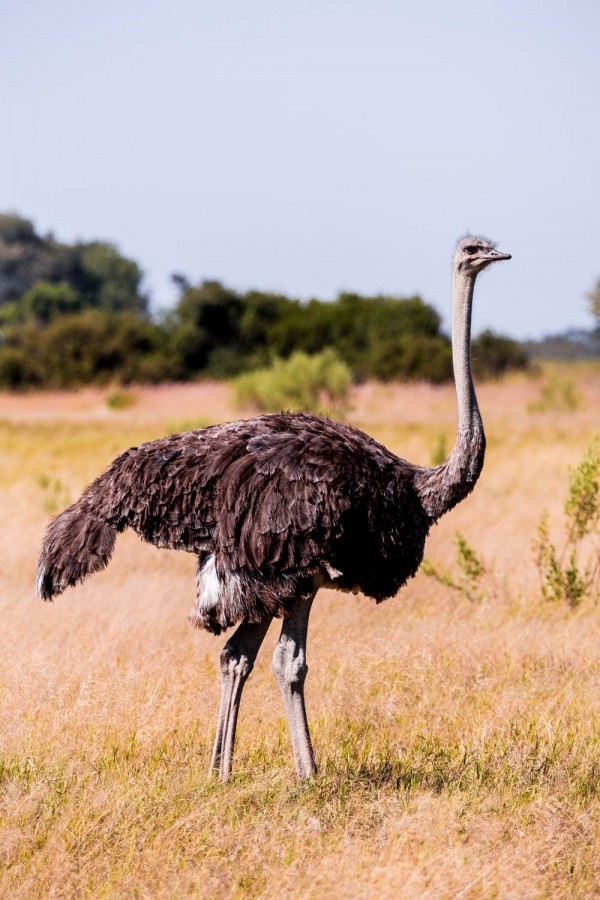
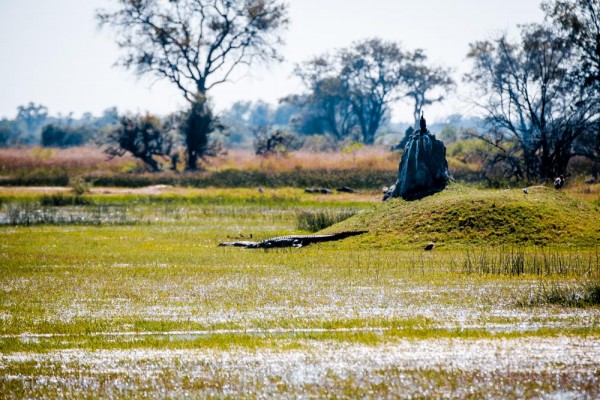
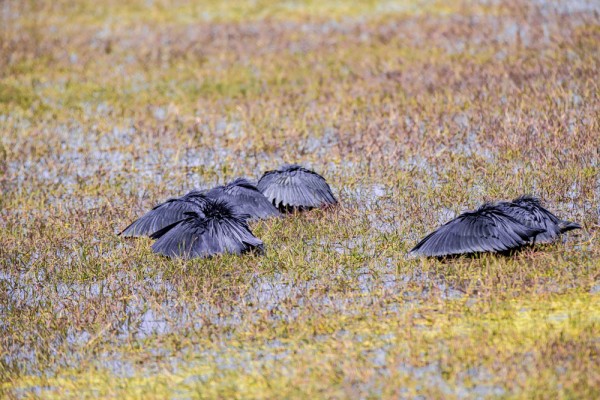
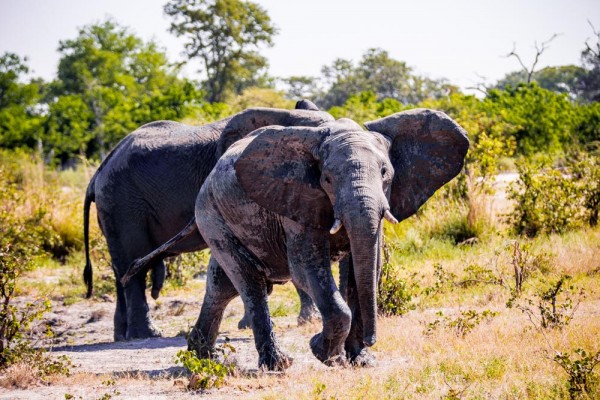
24 Comments on “The Okavango Delta Botswana: An Elephant Encounter”
Are you sure the elephant suddenly charged without warning?
They usually give several warnings before charging
Yes – there was zero warning. It did a very quick trumpet and immediately charged us. Our guide was extremely well trained and had been a guide for over 10 years and had never experienced it before.
OK, I have just been catching up on all these honeymoon posts. WOAH! This is a CRAZY story! I’m telling my boyfriend about it as I read along – we’re both losing it! It flipped the JEEP! Six ribs! No radio! OH MY GAHD!
SO glad you’re ok, and that you continued on to the next camp and kept having fun. I can’t believe you managed to get on an elephant after this. You guys are a lot braver than I would be, I’m sure of it. Also, congratulations again on your wedding, lovely lady, and even if this story is terrifying, in 50 years, it’s going to be a showstopper of a tale. (heck, it already is) xx Sarah
Nooo! I just discovered your comment in my spam folder!! (NOT COOL WORDPRESS, not cool). Thanks so much Sarah!!! It was pretty crazy. I keep telling Connor that we’re set for the ‘what is the craziest thing that’s ever happened to you’ question. Part of me feels like I imagined the whole thing, and then I watch the video and am like “Yeah, that definitely happened.” LOL! Hope you’re having an awesome summer!!! I owe you an email.
My heart was racing reading this entire post. Holy cow. I’m so glad you guy are okay and I feel so bad for the lady on your safari 🙁 I hope she’s on the mend and healing. Have you guys kept in touch with her? Anyway – thank you for sharing this! I would be crying and screaming. You seemed very composed!
We did actually keep in touch with her and our travel agency/guide updated us several times throughout the rest of her trip. She was in very good spirits and is recovering very well. She actually has been traveling to that camp for the past 15 years, so the guides/staff members are basically her second family–she’s actually going back this coming December! Honestly, I’m shocked I didn’t scream or cry before then, I think I was in complete shock!
Omg! I’ve been loving these posts, seriously…such an adventure! I would have 100% cried way before you did!
Thank you so much Cindy!!! I’m so happy to hear that you’ve enjoyed them (I am always worried I ramble on way too much and bore people). And yeah, I have NO idea why I didn’t cry sooner. I think I was in shock!
That is such a scary story, even hearing it the second time and watching that video. I agree that the fact you had no radio is terrifying. I am so glad that you guys and the guest traveling with you are OK.
Thank you so much Julia! I’m so happy that we could meet the other day! Hopefully I didn’t bore anyone with the sharing the details 😉
Another riveting and exciting “real-life” adventure story! I am so glad that I did’;t know what was going on when that was going on! We just saw the video and the other videos as well! Yikes! Glad you are both safe! It would have been sad to leave early!
Wow, definitely an experience you will never forget…. so happy everyone is OK and, hopefully, Cindy will make a full recovery…
Yes! She’s doing very well! We were able to contact her by email several times throughout the trip to check on her 🙂 She’s actually been traveling to that same camp for 15 years now, and is already planning on going back in December. She’s a trooper!
How scary. Glad to hear you are ok. Given that I lose my deal if I’m in downstate Illinois and can’t get a cell phone signal, I’m impressed with everyone’s calm under such conditions.
Haha! This was hilarious. Granted, that drives me crazy too. Honestly, I think I only remained calm because everyone else did and because I felt like I had no other choice at the time! My biggest priority was to save the food/water that we had in the truck and try to flip it as soon as possible. That was our best bet!
I’m loving your blog.
Oh my goodness! What a horrible, terrifying experience! I hope Cindy was ok in the end and that her arm was seen to quickly. That’s a story you’ll never forget! Otherwise it all looks absolutely beautiful and stunning 🙂 I hope the rest of the trip is as good as those moments! xxx
Lucy @ La Lingua Italy
Yes! She made in to Johannesburg and had a few surgeries, and actually ended up flying home to the US the same day that we left Africa! Very ironic. Definitely a story we will never forget. I’ve officially acquired the ‘what is the craziest thing that has ever happened to you’ answer for life!
How terrifying! Glad you’re all ok!
Thanks so much Erin!
I have chills reading this and hearing that video. I can’t even imagine going through something like that! I know you told me briefly about before, but man, the details are jarring and really depict how incredibly scary it was. So glad you guys are alright!!!!
Part of me still can’t believe it happened! Yeah, the details are the scariest part! The radio was more terrifying than the attack…I think. But often times, elephant tusk will go through vehicle doors when they attack, so it could have been so much worse! 🙁
Oh my gosh, so scary! I watched the video and I would have been just as terrified. I think the lack of radio signal would have made me more nervous than the elephants. I’m glad that you decided to continue on to the next camp because all of your pictures are stunning and it sounds like an amazing trip despite the encounter with the elephants. I’m so glad that you were ok and the other guest was able to get medical attention.
Loved your email and pictures. Thank you and have a great day!